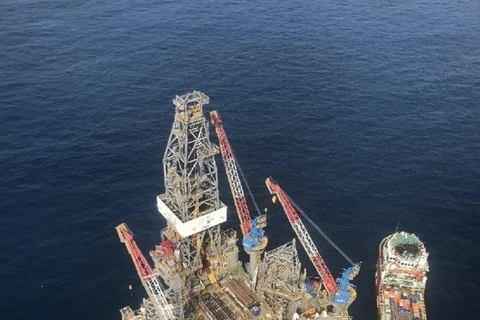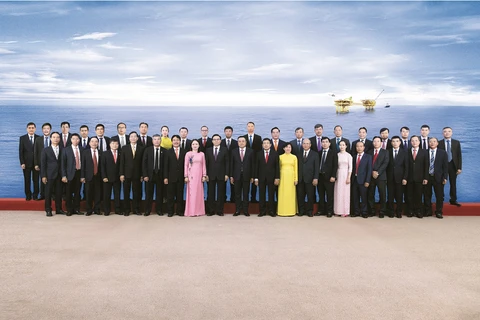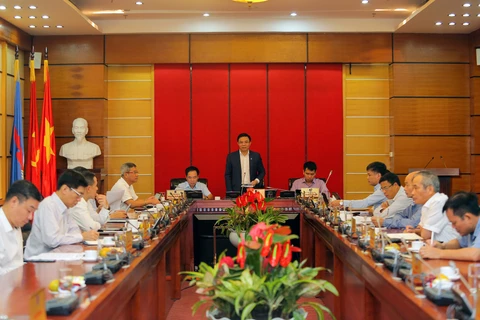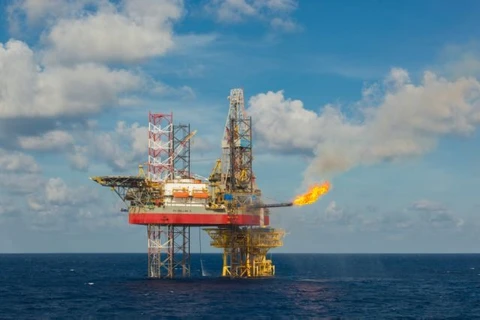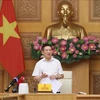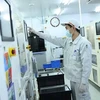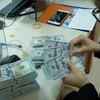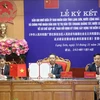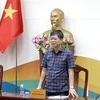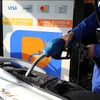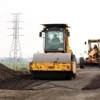Hanoi, (VNA) – Throughout its 45-year history of operation, the Vietnam Oil and Gas Group (PetroVietnam) has faced numerous difficulties and challenges, but with the trust and support of the Party and State, the group has weathered all storms to fulfill its mission and contribute greatly to national socio-economic development.
Less than three months after the liberation of the south and re-unification of the country in 1975, on July 20, 1975, the Politburo issued Resolution 244-NQ/TW on oil exploration in the country during a meeting in Sai Gon. Just one month later, the National Assembly’s Standing Committee approved Decision 33-QN/QH/K5 on the establishment of a Vietnam Oil and Gas General Department.
On September 3, 1975, the Government Council issued Decree 170/CP on setting up the Vietnam Oil and Gas General Department, which turned a new page in the history of Vietnam’s oil and gas industry, ending the separate operation of several organisations in the Geology General Department and Chemicals General Department.
Later, the Party, National Assembly and Government have issued numerous resolutions to orientate and create a corridor for the development of the oil and gas sector.
The group has grown up from almost zero, and have made the impossible possible. Behind each of its major projects such as the Dung Quat refinery, the Ca Mau Gas-Power-Fertiliser Complex or the Nghi Son refinery and petrochemical complex, there were untold stories about uncountable difficulties and snares that the contingent of engineers and workers in the industry have surmounted.
During the most difficult times of the group, such as when oil flows from oil wells of the Vietsovpetro joint venture reduced to an unimaginable level in 1988, leaders of the Party, State and Government still kept their trust in the oil and gas sector and encouraged the sector to seek solutions. The finding of oil in sedimentary rock not only saved the Vietsovpetro joint venture but also opened up a new chapter for oil exploration and exploitation in waters under Vietnam’s sovereignty and jurisdiction.
Many other projects, like the Phu My fertilizer plant, the Dinh Co gas processing plant, the Ca Mau Gas-Power-Fertiliser Complex and the Hua Na and Dak-dring hydro-power plants, also faced protest and doubt. But with the trust and support of the Party and State, they have been completed and put into operation, contributing greatly to national economic development.
PetroVietnam has become the core of the national oil and gas industry. It has developed the full chain of the industry from upstream to midstream and downstream. The industry’s operation also serves as a driver of development in many localities. Major products of PetroVietnam, such as electricity, fertilizer, petrol, oil and gas, play an important role in ensuring power and food security for the country, laying a solid foundation for other economic sectors to develop.
Since the beginning of 2020, the group has struggled with the twin crises – impacts of the COVID-19 pandemic and declining oil prices. However, it has managed to maintain the pace of production and ensure the supply of strategic commodities such as gas, electricity, fertiliser, and petrol for the national economy. The group also posted a profit of more than 10 trillion VND (430 million USD) and paid more than 38 trillion VND (1.63 billion USD) to the State budget.
The oil and gas sector also had good news recently, which was the discovery of a large oil and gas reserve at Ken Bau well in Block 114, in Song Hong Basin, offshore Vietnam’s northern continental shelf, about 65km from Quang Tri province, and 86km from Da Nang city in the central region. The finding is expected to open up more opportunities to attract investment in exploitation and processing, the gas power industry, and oil and gas services in the time to come./.



